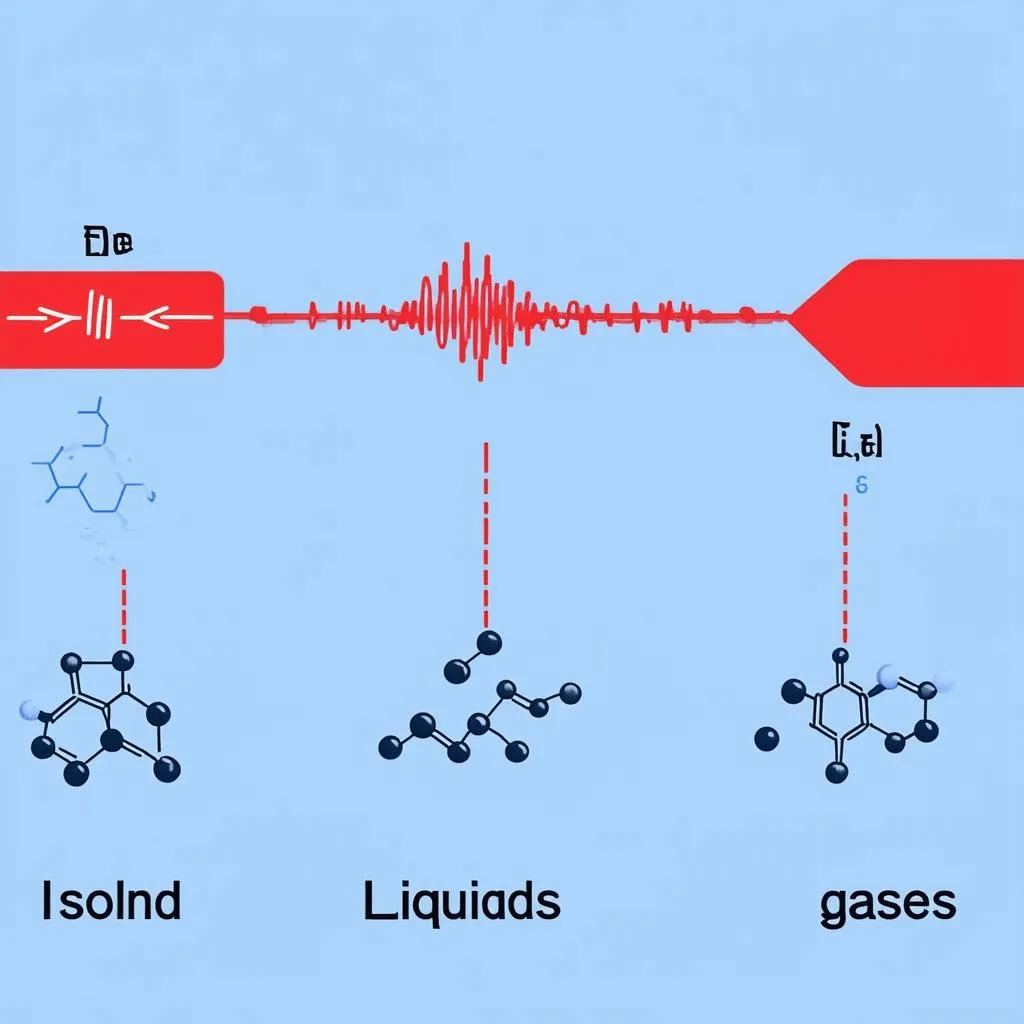Remember that time you visited the Grand Canyon and felt the earth rumble beneath your feet as a tour bus drove past? Or the peaceful serenity you felt listening to the gentle lapping of waves on a beach in Bali? Sound is all around us, painting our world with vibrations and weaving tales of experiences. But have you ever stopped to wonder, how does sound actually travel? And how does the medium it travels through, whether it’s the solid ground, the liquid ocean, or the air we breathe, affect our auditory experience? Let’s embark on a journey to understand how sound, in all its vibratory glory, traverses through solids, liquids, and gases.
The Science of Sound: A Symphony of Vibrations
At its core, sound is energy created by vibrations. Imagine yourself striking a tuning fork. The arms of the fork begin to vibrate rapidly, bumping into the surrounding air molecules. These collisions cause the air molecules to vibrate as well, creating a domino effect that travels outwards from the source. This ripple effect of vibrations is what we perceive as sound.
How Sound Travels Through Solids
Think about the last time you put your ear to a wall. Did you know you were experiencing sound traveling through a solid? Solids, with their tightly packed molecules, offer a superhighway for sound waves. When sound waves hit a solid, the vibrations are easily transferred from one molecule to the next due to their close proximity. This efficient transfer means sound travels faster through solids than through liquids or gases. Remember that rumbling you felt at the Grand Canyon? The sound of the bus traveled faster and further through the solid ground than it would have through the air.
How Sound Travels Through Liquids
Imagine snorkeling in the turquoise waters of the Maldives, listening to the chorus of marine life. Liquids, with their molecules spaced further apart than solids, provide a different environment for sound to navigate. Sound travels slower through liquids compared to solids because the molecules are not as tightly packed. However, sound can still travel significant distances in water, as evidenced by the complex communication systems of whales, which can span hundreds of miles.
How Sound Travels Through Gases
Air, the ocean of gases we live in, is how we most often experience sound. From the chirping of birds in Central Park to the melodic strains of street musicians in Rome, sound fills our world with vibrancy. However, sound travels the slowest through gases. This is because the molecules in gases are the furthest apart, making the transfer of vibrations less efficient. Think about the difference in volume between someone shouting to you across a crowded room versus whispering directly into your ear. The closer the source of the sound, the less distance the sound waves have to travel through the air, resulting in a louder and clearer sound.
Factors Influencing Sound Travel: A Symphony of Variables
While the medium through which sound travels plays a crucial role in its speed and clarity, other factors also come into play. Temperature, for instance, can affect the speed of sound. Sound travels faster at higher temperatures because the molecules are moving faster and colliding more frequently. Similarly, humidity can also impact sound travel.
“Understanding the nuances of sound and how it interacts with its environment can enrich our travel experiences,” says Dr. Emily Carter, a renowned acoustician and author of “The Soundscape of Travel.” “By paying attention to the sounds around us, we can deepen our connection to the places we visit.”
Travel Tips: Tuning into the World Around Us
Want to enhance your travel experiences through sound? Here are a few tips:
Seek out sonic landmarks: Just like visual landmarks, many destinations boast unique soundscapes. From the echoing calls to prayer in Istanbul to the rhythmic drumming of traditional ceremonies in Africa, embrace the sonic tapestry of the places you visit.
Pack noise-canceling headphones: Long flights or noisy accommodations can dampen your travel spirit. Invest in a good pair of noise-canceling headphones to ensure you can enjoy moments of peace and quiet amidst the bustle.
Engage with local musicians: Music is a universal language. Make it a point to listen to local musicians, whether it’s a traditional mariachi band in Mexico or a sitar player in India. Music offers a window into the soul of a culture.
FAQs: Unraveling the Mysteries of Sound
Q: Why does my voice sound different in a recording?
A: This is due to bone conduction. When you speak, you hear your voice not only through the air but also through the vibrations in your skull. This internal resonance creates a different sound than what others hear when you speak.
Q: What is the speed of sound?
A: The speed of sound varies depending on the medium and temperature. In dry air at 20 degrees Celsius, sound travels at approximately 343 meters per second.
Travel Deeper: Explore the World of Sound
Interested in diving deeper into the fascinating world of sound? Check out these resources:
- “A Wave That Travels Through Matter” – This article explores the different types of waves and how they transmit energy.
- “How Fast Can Sound Travel Through Air” – Discover the factors that influence the speed of sound in the atmosphere.
- “A Transverse Wave Travels to the Right Along a String” – This resource delves into the physics of wave motion, providing a deeper understanding of how sound travels.
 Sound Waves in Solids, Liquids, and Gases
Sound Waves in Solids, Liquids, and Gases
 Sound Travel in the Grand Canyon
Sound Travel in the Grand Canyon
By understanding the science behind sound and its intricate dance through solids, liquids, and gases, we can develop a deeper appreciation for the symphony of sounds that surrounds us. So, the next time you listen to the whisper of the wind or the crashing of waves, take a moment to marvel at the journey of sound and the stories it carries.

